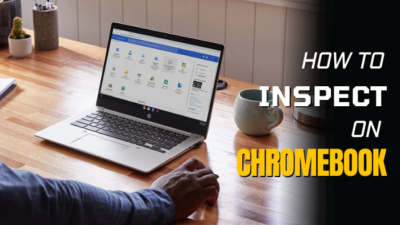Ever wonder why your computer takes so long to open Google Chrome? And not even the browser; every little function works slowly, like sarcopenia.
Well, Windows takes time to load file thumbnails and open them. There are many possible reasons for you to face such an issue.
Windows tends to get slow as we use our computers. The snappiness and quick action slow down with time. As we install more programs, new files are created. It takes Windows more time to analyze and act when we try to perform a particular task.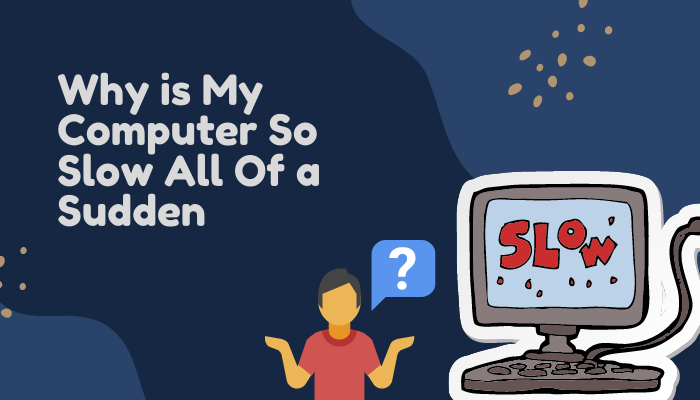
I have listed the possible causes and fixes that will help to speed up your computer from a slowdown. You will also find solutions that will help you in the long run.
Let’s look at the possible causes first.
What are the Possible Causes for Slowdowns in Computers?
The common reasons for slowdowns involve old HDD slowing down, less RAM available to Windows, Antivirus Programs using PC resources, and Startup programs loading when Windows boots up. The imminent failure of HDD and RAM can be possible signs when Windows experience slowdowns.
Task Manager is a good place to start when your PC slows down. Identify which program uses the most resources.
The Performance tab shows the CPU, GPU, and RAM usage. In case you see continuous spikes, take a look at the process tab.
Let us look at why these issues persist in the first place.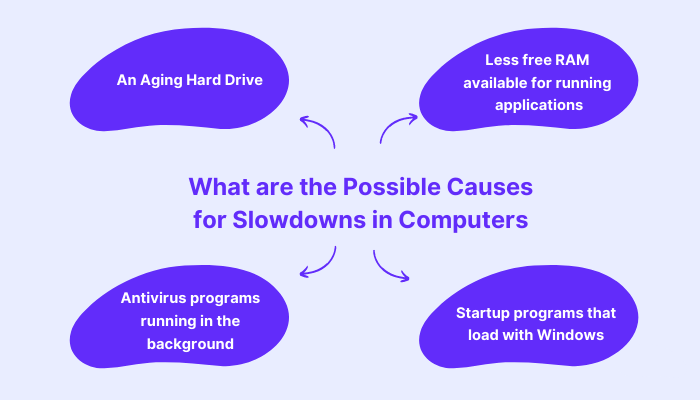
Here are the possible causes for your computer’s slowdown:
An Aging Hard Drive
An old HDD can take a while to read files. As its health deteriorates, the access time of files decreases. The amount of free space in the boot partition determines the speed of Windows. If your C drive is getting full, you will encounter slowdowns.
In extreme cases, file corruption can also take place. You will lose the important files if they are not backed up.
Less free RAM available for running applications
In case your program’s RAM usage exceeds the total amount, the computer will stop working. Background tasks that use computing resources will also slow down a computer.
Antivirus programs running in the background
Antivirus programs are very resource intensive. They will use HDD and CPU to scan continuously. If you work while running a virus scan, you will feel the PC slowing down.
Startup programs that load with Windows
Tons of programs are loaded when Windows boots up. Many of them are not necessary and consume a computer’s resources.
Besides, hardware errors can make a new PC feel slow. If your PC suffers from a hardware problem, check out the solutions later in the article.
Let’s look at some quick fixes first.
How to Fix Sudden Slowdown of My Computer
Before troubleshooting, if our computer hardware experiences a failure, let’s see some quick fixes that can make our PC fast.
Here are the methods to quickly fix your slow computer:
1. Reboot your computer
When a computer is restarted, the basic drivers and files are loaded. It removes the existing processes using computing resources. You will feel an instant smoothness.
Therefore, reboot your computer and see if it fixes the issue promptly.
2. Use Task Manager to find Rogue Programs
Check which programs use HDD and RAM the most. Kill the processes that are not useful to you. If you are running games, check if your game is using GPU. If you use browsers a lot, check Network Utilization. Task Manager makes it easy to pinpoint the programs that affect your usability.
How to end rouge programs from Task Manager:
- Right-click on the taskbar and click Task manager.
- Go to the Process tab and select the program using most CPU and HDD.
- Right-click on the process and click End Task.
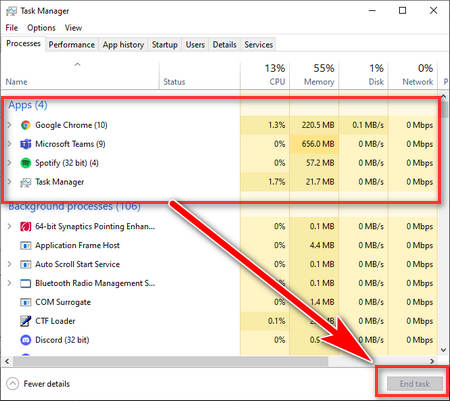
- Go to the Performance tab and see whether the resource utilization returns to normal.
Note: You can open Task manager by pressing Control + Alt + Del key together.
3. Pause Antivirus
The Task manager shows whether Antivirus consumes CPU resources. Stop the program to make your programs utilize Computer resources.
Here are the steps to pause Antivirus protection:
- Right-click on the Antivirus icon in Taskbar.
- Click Pause protection.
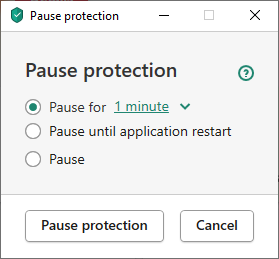
Note: When running Video games, Antivirus programs often cause issues. Online games cannot connect to the internet due to a firewall rule caused by Antivirus. Disabling them can resolve the issue.
4. Clean C: Drive
The boot partition should be at least 20% free. It will make Windows run faster. Run Disk Cleanup to free up the disk space.
Here are the simple steps to Disk Cleanup:
- Right-click on the C drive and click Properties.
- Open the Disk Cleanup tab.
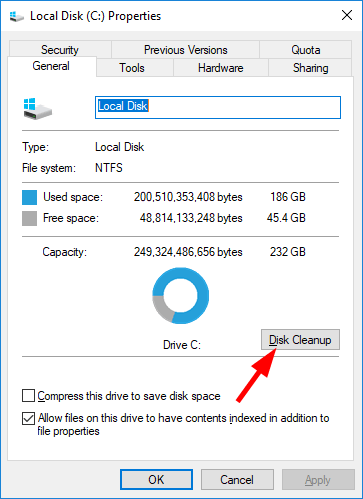
- Click Run to start the cleanup process. After scanning, the possible files to be cleaned are listed.
Your Windows will be free of clutter and will be faster than before.
5. Extend Disk Space on C: Drive
If your disk space runs out, use free HDD space from other drives. It increases the space Windows can use, and thus your computer will perform smoothly.
First, we need to shrink the disk space from a drive where the storage is free.
Here’s how to shrink Disk Space from a drive:
- Press Windows + R.
- Type msc and press Ok.
- Click the Storage tab.
- Right-click on the drive you want to shrink and click Shrink.
- Enter the amount of storage in Megabytes that you want to free.
- Click Ok.
The freed space will appear as unallocated. Now we need to use the freed space to extend the space in our drive.
This is how you can Extend Space in your primary Disk drive:
- Follow the same steps and open Storage under Device Management.
- Right-click on the drive you want to extend and click Extend.
- Enter the amount of storage in Megabytes that you want to free.
- Click Ok.
Now you will see a considerable free space in the C drive. You can restart the windows and see the changes taking place.
6. Disable Startup Programs
If Windows loads many programs when it boots up, the process will take a long time. Disable the programs that you don’t use often. It will decrease the boot time and make the computer fast.
Open Task manager and go to the Startup tab. It will have all the programs that start with Windows. Click on each of them and press disable. This process is the same in Windows 8 and 10.
Here are the steps to disable the startup programs in Windows 7:
- Press Windows key + R.
- Type msconfig and press Ok.
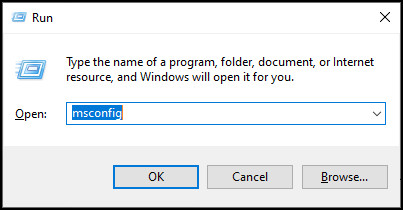
- Go to the Startup tab and Disable the programs you don’t need.
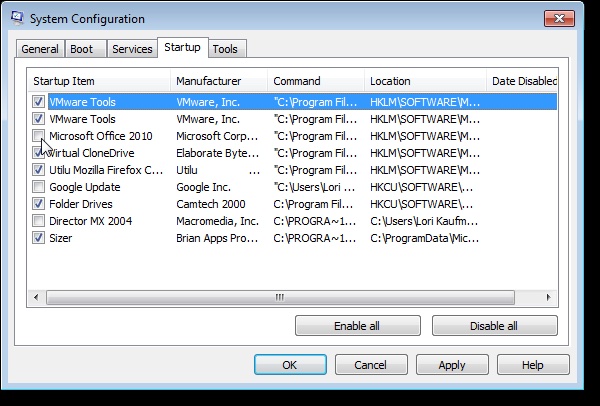
- Restart your Computer.
The next time you boot your computer, the startup programs will not load. Enjoy the speed boost.
7. Uninstall less-used Applications
If your computer is running out of space, removing applications that are not used can free up a ton of storage.
Here is how you can Uninstall a program:
- On the Start menu, search Control Panel.
- Open Control Panel and click Add or Remove Program. You will get a list of installed programs.
- Click Uninstall to remove a program.
8. Run a Virus Scan in the Operating System
The presence of malicious programs will slow down Windows. Even if you are sitting idle on the Desktop, the Task manager will show high usage of CPU and HDD. If you see unknown programs using the resource, it is vital to run a virus scan.
Use Windows Defender or any other Antivirus program to run a quick scan. If malicious programs are detected, remove them. If your issue is unresolved, run a complete system and Disk scan. It will take longer than running a quick scan but will ensure complete protection.
Note: Earlier, we advised you to pause the protection of the Antivirus program. It was advised as your safe-listed applications were not performing well. The intrusions are sometimes caused by Anti Virus protection. In any other case, always enable the program.
Hardware Problems that Make Windows Slow
If your issue remains unresolved, your computer can have problems with Hardware or Software. Hardware issues involve problems with HDDs and RAM.
If the HDD’s health decreases, Windows takes a long time to access the files. Error with the RAM sticks can also give out errors.
Let us look at some Hardware issues and how to resolve them.
1. Check HDD Health
If you have an old HDD, run a speed test using Crystal Disk Mark to see how the drive performs. You can also check its health using HD Tune.
After running the test, the health of your HDD is shown in percentage. A higher number indicates better health.
Alternatively, you can use a built-in utility in Windows called Checkdisk. It can check for disk errors and attempt to correct them.
Here is how you can run a disk check on your drive:
- Press Windows key + R.
- Enter cmd and press Ok.
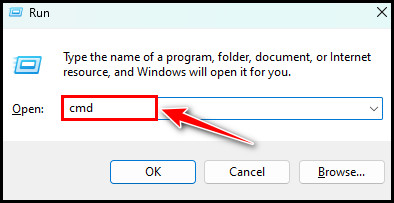
- Write chkdsk :C /r in the command prompt and press Enter.

- Write chkdsk :C /f and press Enter to repair the drive.
2. Run Disk defragmentation process
Disk defrag is used to make the most commonly used files readily available to Windows. A mechanical drive needs to be defragmented to improve its performance.
Here are the steps to run Disk Defragmentation in your drive:
- Open the Start Menu.
- Write Disk Defrag and click to open the Disk Defrag tool.
- Select the drives that you want to defrag.
- Press Ok and the defrag process will start.
3. Check Windows file integrity using DISM and SFC
The core files of Windows can be damaged or corrupted. It can cause Windows to access the disk more often to repair it. We can check if an error has occurred.
Windows has a tool called SFC (System File checker). It also has the DISM tool to repair the corrupted files. The tool can re-download the core files if needed.
Here are the steps to run SFC:
- Press Windows + R.
- Enter cmd and press Ok.

- Write sfc/scannow in the command prompt.
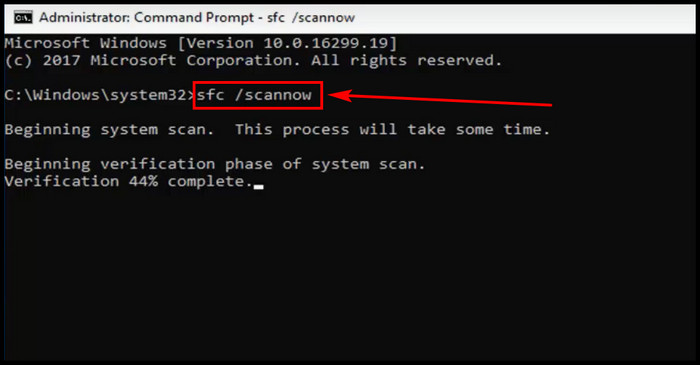
If SFC throws an error, fix the issue using the DISM tool.
To run DISM, enter the following commands in CMD:
- Press Windows + R.
- Enter cmd and press Ok.

- write DISM/online/cleanupImage/RestoreHealth in the command prompt.

The tool will re-download and fix any errors with the Windows file.
4. Memory Failure
Continual problems can result in changing the memory stick. But luckily, we can diagnose the problems caused by a memory stick.
Use Memtest86 that can diagnose what issues are causing problems in the memory.
Here are the steps to run a memory test using Memtest86:
- Download Memtest86 and create a bootable USB drive.
- Press ESC to go to the BIOS. Keypress to the BIOS varies from device to device.
- Change the boot order to a USB drive.
- Save and exit.
- Restart the Computer and boot from the USB drive.
- Start the Memory test.
After 30 mins to 1 hour, the test will conclude. You can view the error present in the RAM.
5. Monitor your Component’s Temperature
Overheating is often a possible cause of Slowdowns in Windows. If heat builds up, it can throttle the computer to perform slower.
HWInfo is a free tool to monitor the temperature of various components. Once we know which part is overheating, we can clean the Computer fan and the thermal paste of the CPU or GPU.
Good Practices to Prevent Computer from Slowdown
Now, let’s look at some simple methods to keep our computers fast. It is applicable for all PCs, slow or fast.
You may already know these. Often we skip these steps. But they are necessary for the smooth operation of the Operating System.
Here are the methods to prevent a computer from slowdown:
Run Windows Update
Always ensure you run the latest updates. Update your graphics, chipset, and network drivers. Updated software often comes with bug fixes.
Here are the steps to run Windows Update:
- Write Windows Update.
- Click and open Windows Update.
- Click Check for Updates.
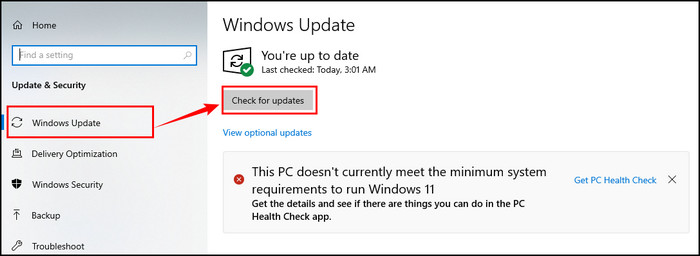
- Select all the Updates found and click Install.
Reinstall Windows
If nothing works out for you, reinstall Windows. It is considered to be a final resort.
Make sure to backup your files from the boot partition to other drives.
Upgrade SSD and RAM (Long-term Solution)
To make the most out of your computer, you need to upgrade your hardware. Get an SSD in place of the HDD. The computer becomes the most responsive in this way.
If you are running out of memory, upgrade to another stick of RAM. Using the same capacity will make the memory run in dual-channel mode. It will boost graphics-heavy tasks.
Conclusion
Windows can get slow for various reasons. From software to hardware issues, the troubleshooting can seem endless.
I wrote this guide considering all the possible reasons that cause a PC to slow down. If you follow the guide depending on what caused the problem in the first place, it will make your life a bit easier.
Till then, it’s goodbye.


